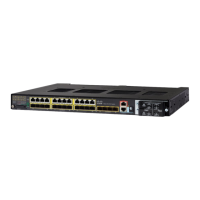873
Configuring IP Unicast Routing
Configuring ISO CLNS Routing
This feature is automatically enabled and requires no configuration. For more information on this feature, see the
“Configuring Nonstop Forwarding” chapter in the High Availability Configuration Guide, Cisco IOS Release 15S.
Enabling IS-IS Routing
To enable IS-IS, you specify a name and NET for each routing process. You then enable IS-IS routing on the interface
and specify the area for each instance of the routing process.
BEFORE YOU BEGIN
You should know your network design and how you want traffic to flow through it before configuring IS-IS. Define areas,
prepare an addressing plan for the devices (including defining the NETs), and determine the interfaces that will run
integrated IS-IS. To facilitate verification, a matrix of adjacencies should be prepared before you configure your devices,
showing what neighbors should be expected in the adjacencies table.

